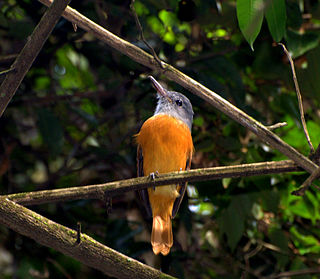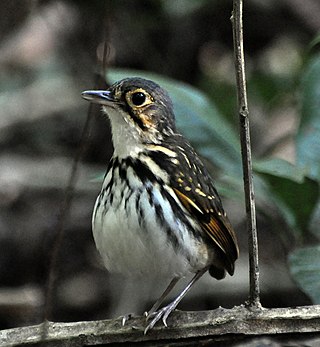
The British Trust for Ornithology (BTO) is an organisation founded in 1932 for the study of birds in the British Isles. The Prince of Wales has been patron since October 2020.
The British Ornithologists' Union (BOU) aims to encourage the study of birds ("ornithology") around the world in order to understand their biology and aid their conservation. The BOU was founded in 1858 by Professor Alfred Newton, Henry Baker Tristram and other scientists. Its quarterly journal, Ibis, has been published continuously since 1859.

The American Ornithological Society (AOS) is an ornithological organization based in the United States. The society was formed in October 2016 by the merger of the American Ornithologists' Union (AOU) and the Cooper Ornithological Society. Its members are primarily professional ornithologists, although membership is open to anyone with an interest in birds. The society publishes the two scholarly journals, Ornithology and Ornithological Applications as well as the AOS Checklist of North American Birds. The American Ornithological Society claims the authority to establish standardized English bird names throughout North and South Americas.

The American Birding Association (ABA) is a nonprofit organization, founded in 1969, dedicated to recreational birding in Canada and the United States. It has been called "the standard-bearer for serious birding in North America." Originally concentrated on finding, listing, and identifying rare birds, the ABA now seeks to serve all birders with a wide range of services and publications.

The Royal Australasian Ornithologists Union (RAOU), now part of BirdLife Australia, was Australia's largest non-government, non-profit, bird conservation organisation. It was founded in 1901 to promote the study and conservation of the native bird species of Australia and adjacent regions, making it Australia's oldest national birding association. In 1996, the organisation adopted the trading name of Birds Australia for most public purposes, while retaining its original name for legal purposes and as the publisher of its journal, the Emu. In 2012, the RAOU merged with Bird Observation & Conservation Australia to form BirdLife Australia.

Edward Howe Forbush was a noted Massachusetts ornithologist and a prolific writer, best known for his book Birds of New England.

The blue-and-white swallow is a passerine bird that breeds from Nicaragua south throughout South America, except in the deserts and the Amazon Basin. The southern race is migratory, wintering as far north as Trinidad, where it is a regular visitor. The nominate northern race may have bred on that island.

Attila is a genus of tropical passerine birds, the attilas. They belong to the tyrant flycatcher family. The species in this genus have large heads and hooked bills; they are markedly predatory and aggressive for their size – hence the scientific and common names, which refer to Attila the Hun.

Alexander Frank Skutch was a naturalist and writer. He published numerous scientific papers and books about birds and several books on philosophy. He is best remembered ornithologically for his pioneering work on helpers at the nest.

Edward Alexander Bergstrom was an ornithologist, scientific journal editor, and conservationist, doing all of his work in these fields as a volunteer.

The streak-chested antpitta or spectacled antpitta is a species of bird in the family Grallariidae. It is found in Colombia, Costa Rica, Ecuador, Honduras, Nicaragua, and Panama. Its natural habitat is subtropical or tropical moist lowland forest.
The Ornithological Society of New Zealand (OSNZ), also known as Birds New Zealand, is a non-profit organisation dedicated to the study of birds and their habitats in the New Zealand region. Founded in 1940, it caters to a wide variety of people interested in the birds of the region, from professional ornithologists to casual birdwatchers.
The Cooper Ornithological Society (COS), formerly the Cooper Ornithological Club, was an American ornithological society. It was founded in 1893 in California and operated until 2016. Its name commemorated James Graham Cooper, an early California biologist. It published the ornithological journal The Condor and the monograph series Studies in Avian Biology. It presented the annual Loye and Alden Miller Research Award, which is given for lifetime achievement in ornithological research and was a member of the Ornithological Council.
The Ludlow Griscom Award for Outstanding Contributions in Regional Ornithology is an award bestowed by the American Birding Association upon individuals who are determined to have "dramatically advanced the state of ornithological knowledge for a particular region," through long-term studies of status and distribution, the writing and/or publication of field guides to birds of a certain area, work as part of a breeding bird atlas project, through the publishing of academic papers on regional ornithology, or through their efforts in inspiring and teaching about the subject of birding.

Chandler Seymour Robbins was an American ornithologist. His contributions to the field include co-authorship of an influential field guide to birds, as well as organizing the North American Breeding Bird Survey.
Harold Francis Greeney III is an American biologist best known for establishing the Yanayacu Biological Research Station and Center for Creative Studies on the eastern slopes of Antisana volcano in Ecuador. He received his PhD from the Department of Behavioural Ecology, University of Wrocław, Wrocław, Poland in 2008, his MSc from Department of Entomology at the University of Arizona in 1999, and his BSc at Wake Forest University in 1993.

Richard Charles Banks was an American author, ornithologist and Emeritus Research Zoologist on staff with the Patuxent Wildlife Research Center run by the U.S. Geological Survey and stationed at the Smithsonian Institution in Washington, D.C. He is the founder of the Ornithological Council and known for his study of the migratory systems, patterns, and geographic variations of North American birds, primarily focusing on the research and analysis of Greater White-fronted Geese.
The Journal of Field Ornithology, formerly Bulletin of the Northeastern Bird-Banding Association and Bird Banding, is a peer-reviewed scientific journal. Established in 1925 and published quarterly, it covers ornithology.












